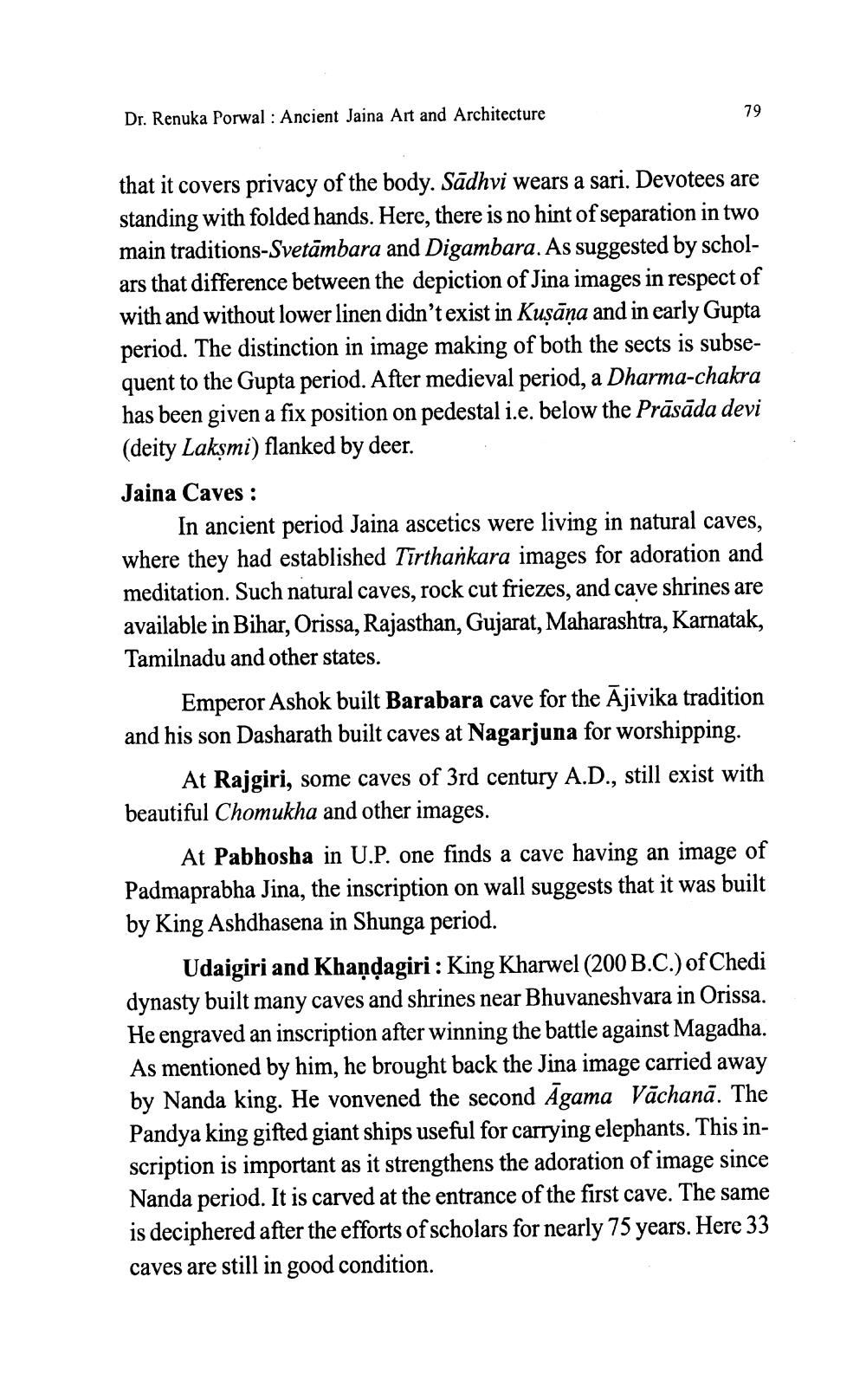________________
Dr. Renuka Porwal : Ancient Jaina Art and Architecture
that it covers privacy of the body. Sādhvi wears a sari. Devotees are standing with folded hands. Here, there is no hint of separation in two main traditions-Svetāmbara and Digambara. As suggested by scholars that difference between the depiction of Jina images in respect of with and without lower linen didn't exist in Kuşāņa and in early Gupta period. The distinction in image making of both the sects is subsequent to the Gupta period. After medieval period, a Dharma-chakra has been given a fix position on pedestal i.e. below the Prāsāda devi (deity Lakşmi) flanked by deer. Jaina Caves :
In ancient period Jaina ascetics were living in natural caves, where they had established Tirthankara images for adoration and meditation. Such natural caves, rock cut friezes, and cave shrines are available in Bihar, Orissa, Rajasthan, Gujarat, Maharashtra, Karnatak, Tamilnadu and other states.
Emperor Ashok built Barabara cave for the Ājivika tradition and his son Dasharath built caves at Nagarjuna for worshipping.
At Rajgiri, some caves of 3rd century A.D., still exist with beautiful Chomukha and other images.
At Pabhosha in U.P. one finds a cave having an image of Padmaprabha Jina, the inscription on wall suggests that it was built by King Ashdhasena in Shunga period.
Udaigiri and Khaņdagiri : King Kharwel (200 B.C.) of Chedi dynasty built many caves and shrines near Bhuvaneshvara in Orissa. He engraved an inscription after winning the battle against Magadha. As mentioned by him, he brought back the Jina image carried away by Nanda king. He vonvened the second Āgama Vāchanā. The Pandya king gifted giant ships useful for carrying elephants. This inscription is important as it strengthens the adoration of image since Nanda period. It is carved at the entrance of the first cave. The same is deciphered after the efforts of scholars for nearly 75 years. Here 33 caves are still in good condition.




